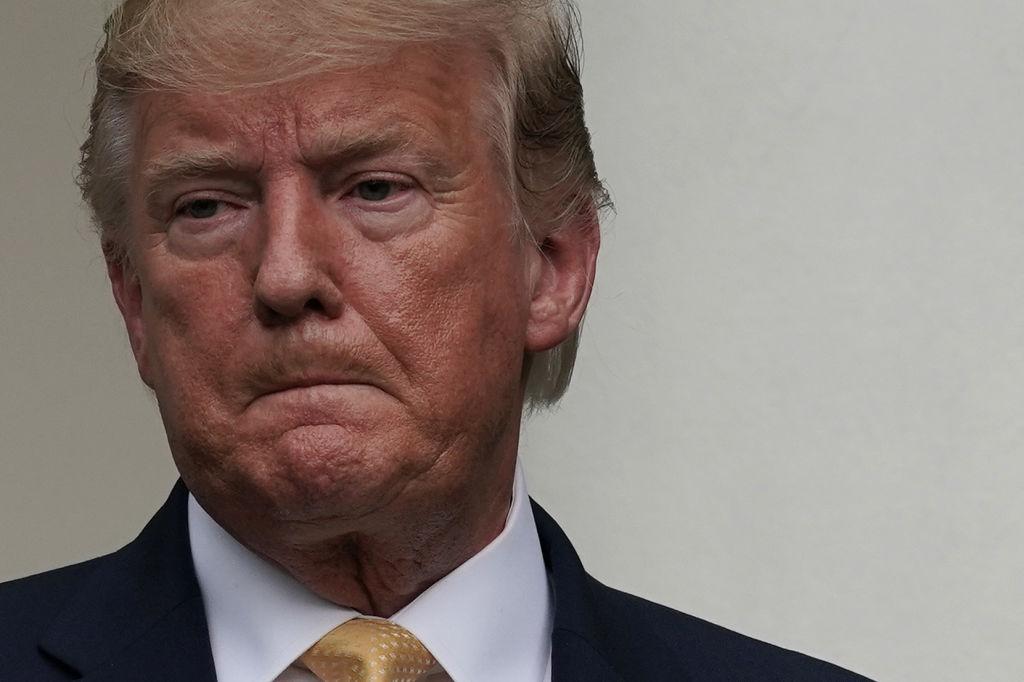5G is the next generation of wireless network, and whether you believe the hype or side with the tin-foil cancer-conspiracy crowd, one thing’s painfully clear: The U.S. isn’t winning. And it’s kind of Donald Trump’s fault.
According to a 2018 Deloitte report called “5G: The Chance to Lead for a Decade,” China has outspent the U.S. by about $24 billion on 5G. The country aims to spend $400 billion to fuel the development of the technology because of its critical nature to China’s national security and technological leadership. The document’s assessment is blunt: “China and other countries may be creating a 5G tsunami, making it near impossible to catch up.”
In March, the U.S. government put out its answer, a position statement on 5G called “National Strategy to Secure 5G” — and it was a shockingly empty document, meant largely to erect guardrails around Huawei. “My Administration is committed to protecting America’s national security, promoting our prosperity, and preserving our civil liberties and democratic ideals. Ensuring the security, reliability, and trustworthiness of our
Unfortunately, this breezy, six-page document failed spectacularly at that. What did it actually do? It offers to look into potential security issues around “high-risk vendors.” You know, the kind from China. It promises to “promote the availability of secure and reliable equipment and services in the market.” I assume that means ours, instead of theirs.
How the U.S. fell short on 5G

What’s missing is the national investment in research and development, the billions in grants and incentives to researchers, the partnership with educational institutions, the panels of advisors from private industry, and so on. U.S. powerhouses like Qualcomm, Intel, and Broadcom have led the way in 5G, and carriers like Verizon, AT&T, T-Mobile, and Sprint are investing billions. But they’re going it alone – without the support of the U.S. government, despite this six-page document.
It’s hard to compete on a global scale without that kind of large-scale help, which hasn’t come from the Trump administration. This coming from a president who has talked a big game about 5G development on Twitter.
I want 5G, and even 6G, technology in the United States as soon as possible. It is far more powerful, faster, and smarter than the current standard. American companies must step up their efforts, or get left behind. There is no reason that we should be lagging behind on………
— Donald J. Trump (@realDonaldTrump) February 21, 2019
So 5G? Yeah, we failed on that one. Can we do more on 6G?
I spent some time Tuesday talking with Susan Miller, president and CEO of telecom trade association ATIS, the Alliance for Telecommunications Industry, along with Mike Nawrocki, the group’s vice president of technology and solution. On Wednesday morning, the group put out a call to action around 6G, and while it doesn’t go so far as to chide the current administration for its tepid 5G moves, it is clear that we need to do more if we want to maintain our position at the forefront of the race towards the next-generation network.
“The journey to the next decade begins now,” the document boldly begins. “While the world is exploring opportunities that will light the path to 6G, the U.S. must take timely and critical action to ensure unquestioned leadership in 6G innovation and development.”
Looking ahead to 6G
To that end, it declares that we need vision around 6G and makes clear what exactly a next, next-generation network could look like: Distributed intelligence spread within the network itself, edge computing and artificial intelligence throughout, advanced antennae that tap into terahertz bandwidths, security within the network itself, and more. And it calls on the U.S. government for additional funding for R&D, tax credits to encourage massive investments, the creation of a national spectrum policy, and financial incentives to encourage public and private sector adoption.
It’s bold, visionary, and ambitious — exactly the opposite of Trump’s six-page document.
“If the U.S. is to ensure its leadership, we need to act now,” Miller told Digital Trends.
We already have a successful model we can lean on: When NASA mothballed the space shuttle and abandoned its efforts to build a replacement, the space agency set up a public/private sector partnership to build a replacement vehicle. It consisted of a series of grants with milestones that unlock bigger grants, and it helped SpaceX, Boeing, Blue Origin, and a variety of other companies successfully build new rocket ships. SpaceX plans to launch a spacecraft with astronauts for the first time next week, thanks to this series of grants and incentives.
Nawrocki stressed that models like China’s — massive government investments, or top-down leadership — aren’t the way forward. Especially not in a free-market economy like the United States. “It’s important that industry and the government be at the table. I don’t know that that’s there today,” he said. And the answer isn’t simply to throw money at the problem, in the form of grants or R&D. The plan is to have bold leadership across a broad array of fronts. Just as the U.S. once led in the space race, we can lead in technology, the ATIS argues.
“This is a U.S. national strategy, and its intent is not to just combat China, it’s to convey U.S. leadership globally,” Miller said.


